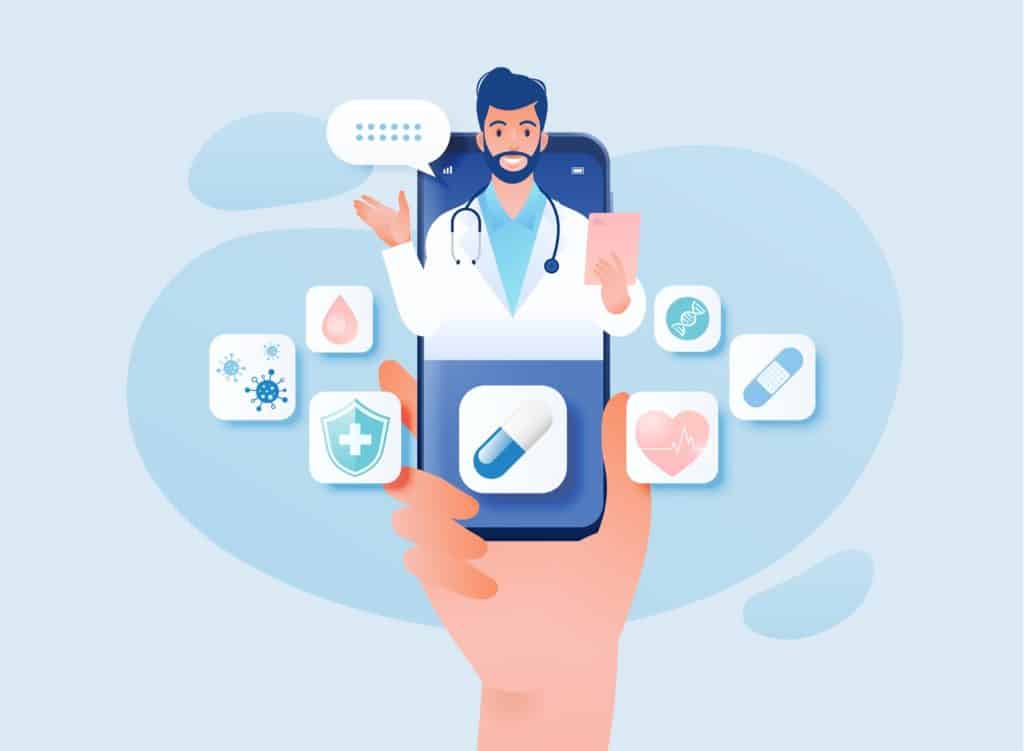Digital equity in healthcare

With healthcare services and health information increasingly moving online, access to this type of care requires digital literacy skills. We know that some of the populations we serve at Hennepin Healthcare have challenges when it comes to digital literacy and access.
- 16% of American adults have gaps in their digital literary skills, therefore, limitations on their device (laptop, tablet, mobile) use.
- 47% of adults aged 50 – 80 have concerns about using technology for healthcare/telehealth.
- 38% of older Americans can’t access telehealth visits, mainly due to technology experience.
- More than 12% of US households do not have internet service due to limited access (some rural with no access), affordability, or no interest.
- Utilization of virtual care is highly correlated with income level.
- Non-white and non-English speaking patients use virtual care far less than their white counterparts and cite digital literacy and access as the primary barriers.
- Households earning less than $30k per year have a computer, compared to 94% of households making over $100k
- 18 million households in America do not have internet access
- Digital redlining is a real threat to certain urban communities
So how do we close this gap?
Digital navigators
A digital navigator is an individual responsible for educating and supporting patients as it relates to digital literacy, access, and equity via face-to-face and virtual engagement. This assistance entails digital literacy training on many of the technologies required to actively engage with healthcare. Many people have access to a cell phone, but without the knowledge and skill set to know how to use them, they basically remain just a phone. These digital navigators will also be able to help patients gain access to community resources to provide no or low-cost hardware and broadband solutions.
Telehealth
Not everyone has access to internet service and assistance. Healthcare systems are partnering with library-based telehealth rooms. In these rooms, a person can train or practice virtual visits. Examples of testing areas can be what icons or areas do you use to request an interpreter, what to do if your doctor cannot hear you (click unmute), how to schedule your next appointment, how to reorder prescriptions, etc. Skill testing can bring an intimidated participant and graduate them to a digital user, and, according to Literacy Minnesota, completing the program makes graduates feel a sense of belonging and confidence.
Who can participate
Who can spot or determine someone who may need this service? Anyone can, but referrals usually come from primary care, social workers, case managers, family members, community paramedics, or front desk staff.
Digital Equity Act
Hennepin Healthcare and other organizations were already working on digital literacy programs, but the pandemic truly brought this need into a brighter light. According to the Pew Research Center, one in five teenagers in the US suffered a lack of reliable internet to comply with virtual schooling. Wealth and income gaps in our communities mean communities of color, people with disabilities, low-income households, and rural communities were impacted more by digital skills and digital access gaps in an ever-increasing technology-driven world.
Hennepin Healthcare’s Ryan Jelinek, DO is leading this charge. “We are excited to have a service available to our patients that can start to address the gaps we have been subjectively observing for quite some time. At the same time, we are also excited to start collecting objective data on digital access and literacy that can fuel future research, work, and strategic collaborations”
In 2021 the US Senate passed the Digital Equity Act to fund this effort with grants totaling $2.75 billion.
Besides better access to healthcare, digital literacy impacts many of the most prominent social determinants of health (SDOH) in that it helps people apply for jobs, search for living conditions, access unemployment benefits, learn new skills, and connect with others. Because of this broad impact, digital literacy and access are commonly seen as a “super” SDOH and thus warrant the attention of healthcare providers and systems.
 Dr. Jelinek is dual board certified in Internal Medicine and Clinical Informatics. He currently practices within the Hospitalist Division at Hennepin Healthcare. He currently serves as the Medical Director for Telehealth and Patient Access. In addition to this, he continues his work in the clinical informatics fellowship as the associate program director. His work centers around building advanced and innovative healthcare delivery strategies to improve access, quality, and equity for the patients we serve at Hennepin Healthcare.
Dr. Jelinek is dual board certified in Internal Medicine and Clinical Informatics. He currently practices within the Hospitalist Division at Hennepin Healthcare. He currently serves as the Medical Director for Telehealth and Patient Access. In addition to this, he continues his work in the clinical informatics fellowship as the associate program director. His work centers around building advanced and innovative healthcare delivery strategies to improve access, quality, and equity for the patients we serve at Hennepin Healthcare.

